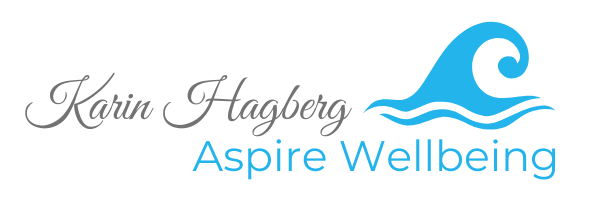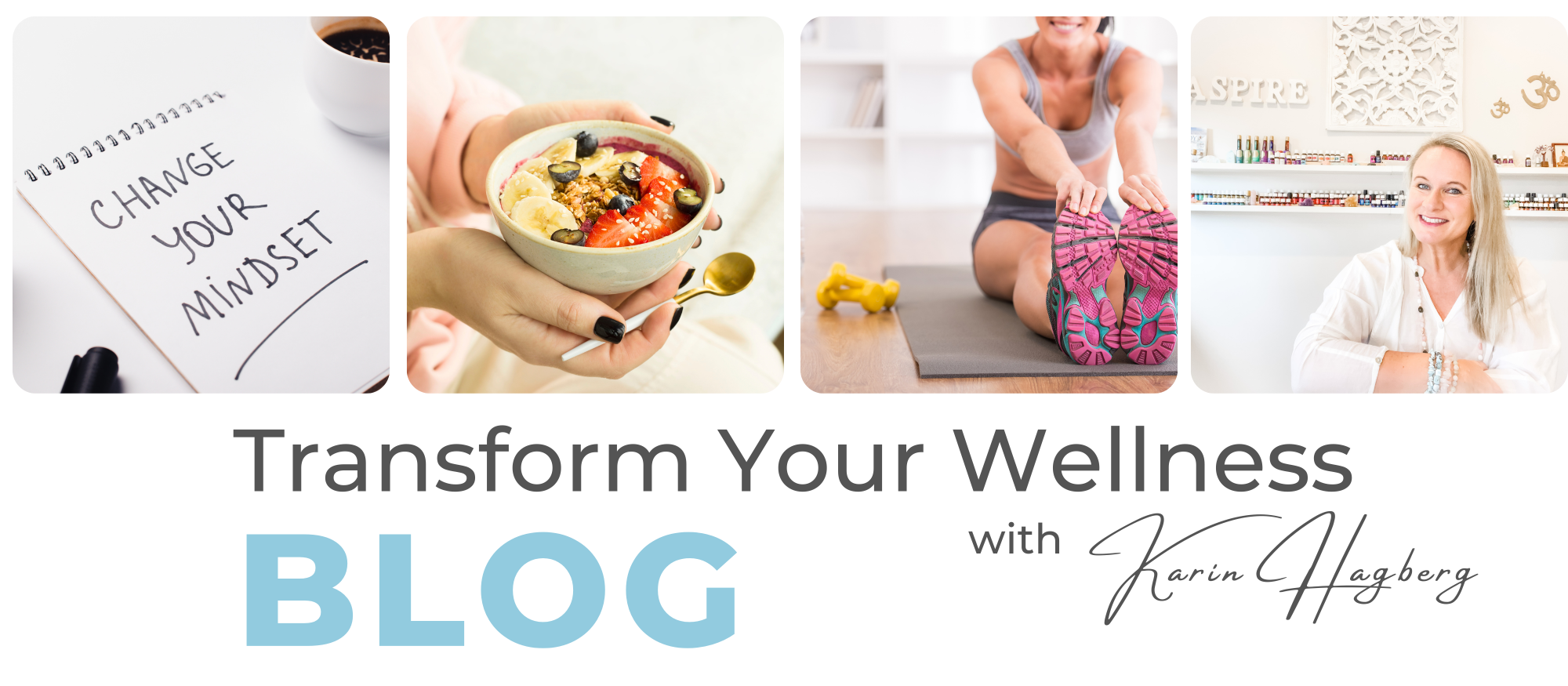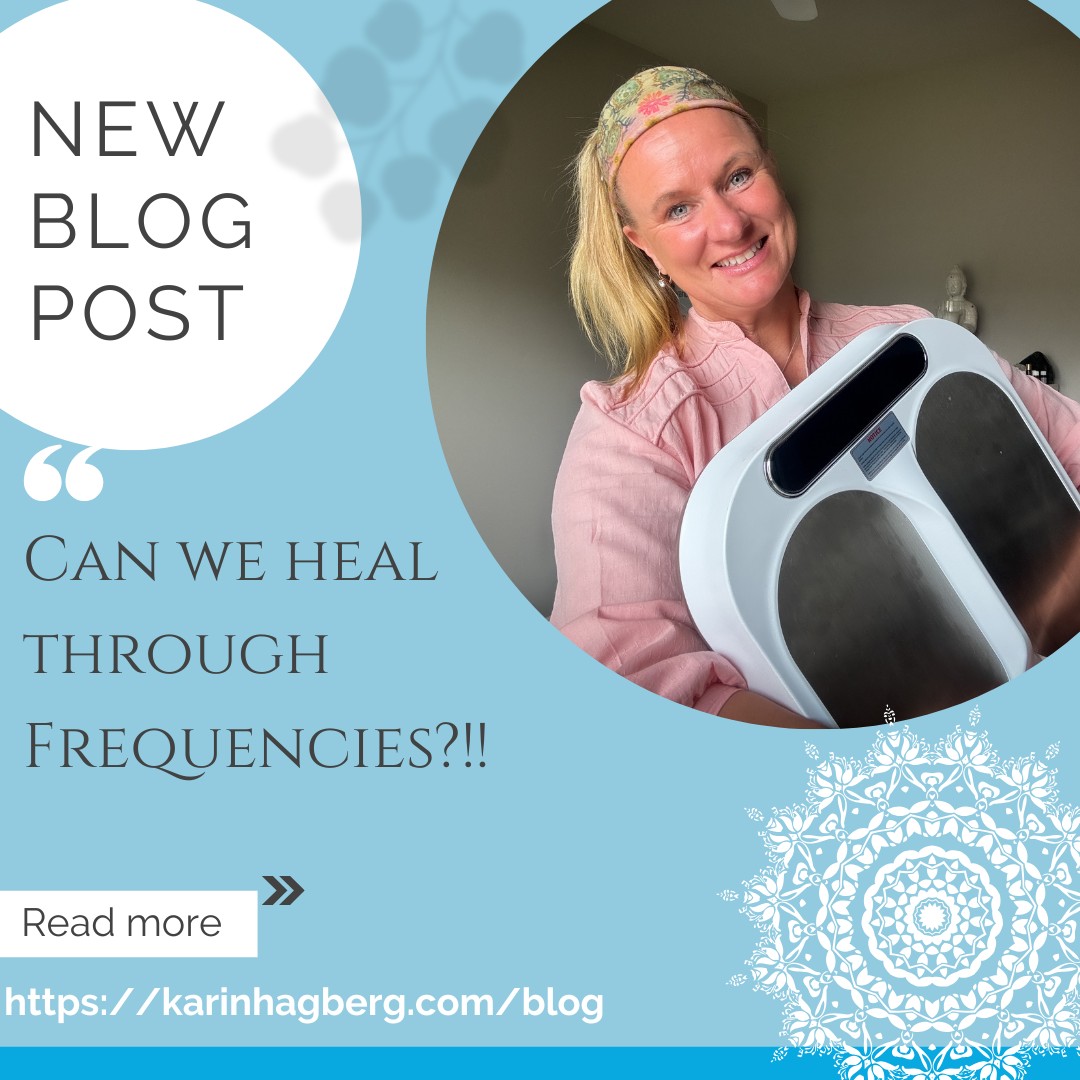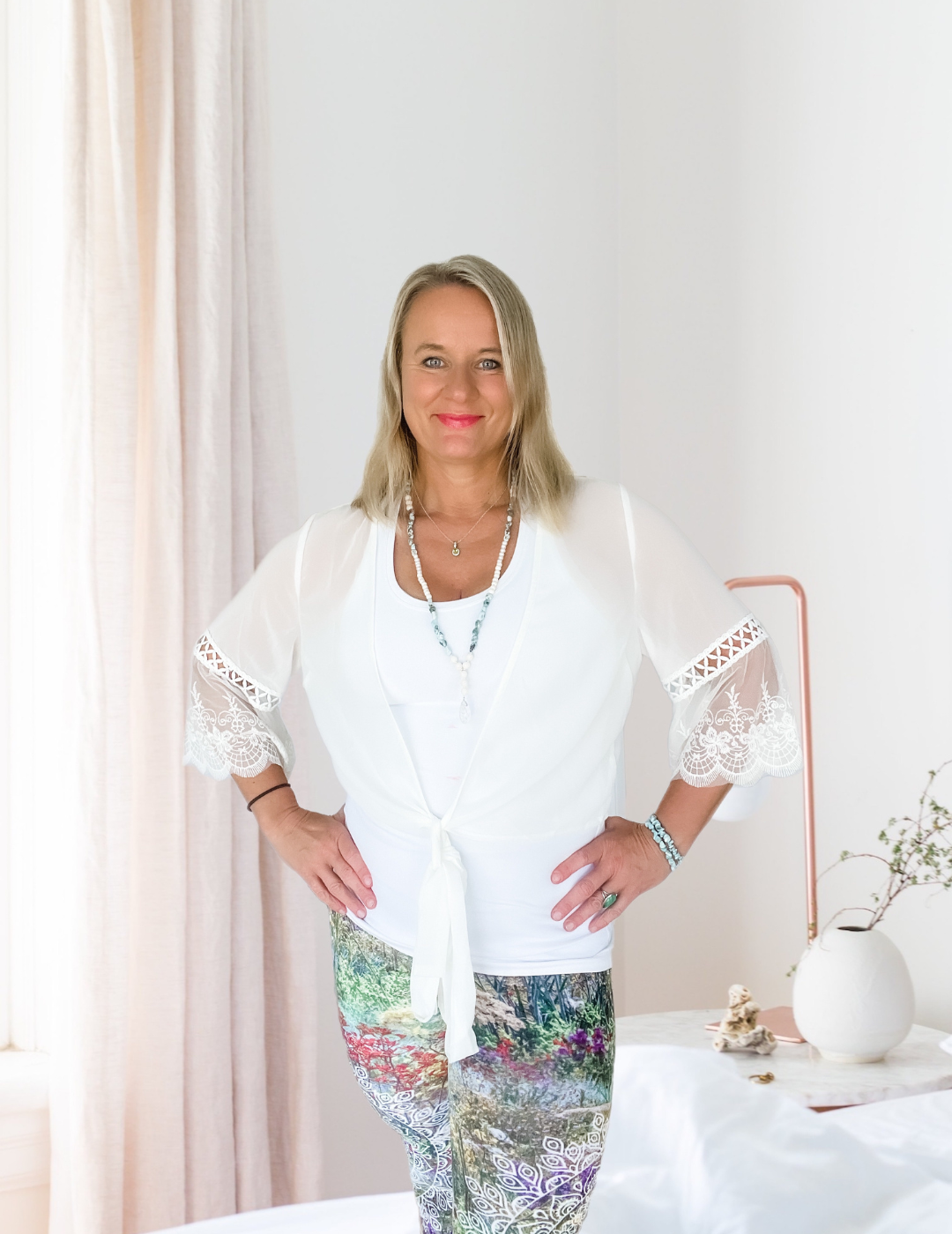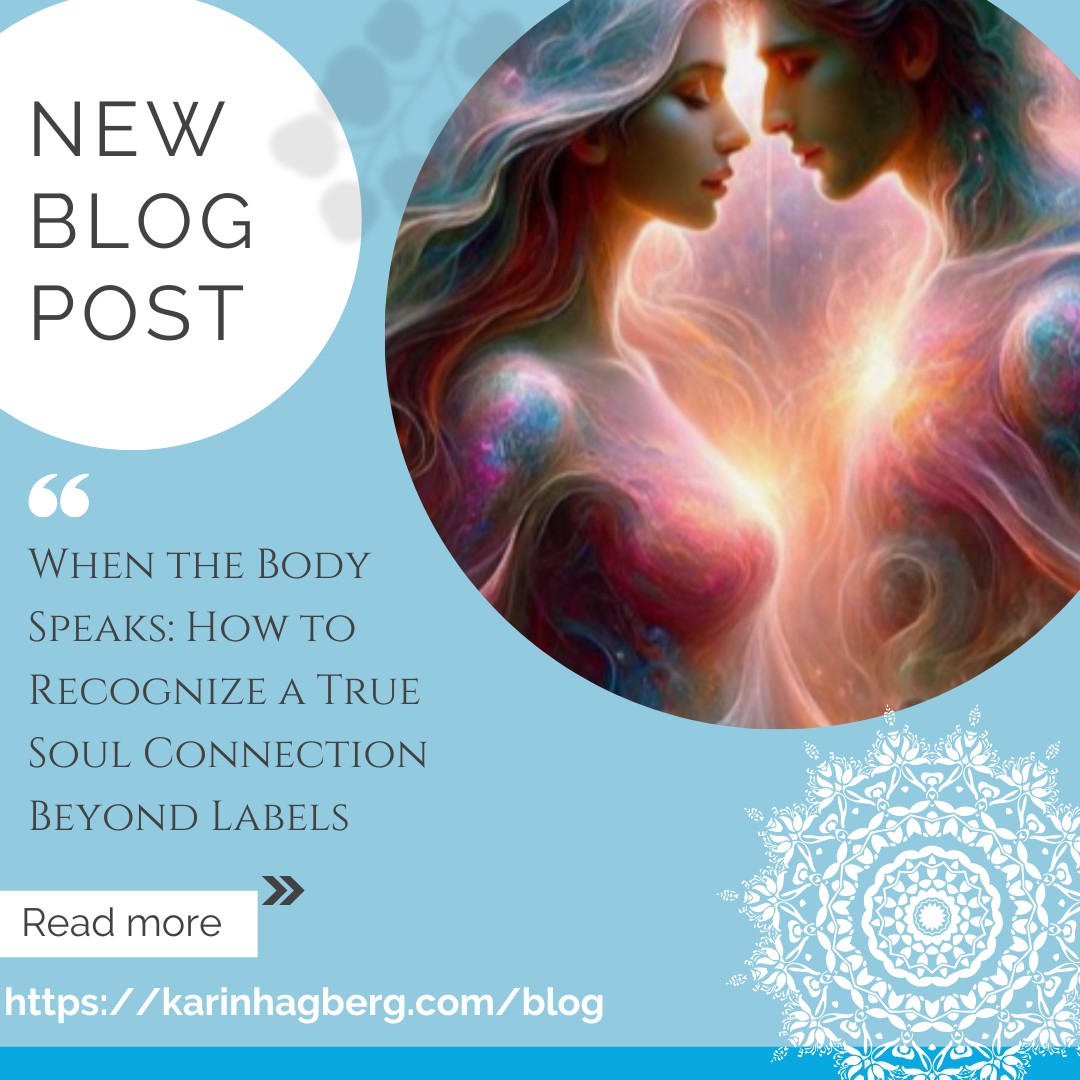
Discover the liberating truth about soul connections and why chasing labels like twin flames or soulmates might be holding you back from true authenticity. Instead of getting lost in definitions, learn to tune into your body's ancient wisdom, where subtle signals like openness or tension reveal what your soul already knows.
Explore six powerful questions that cut through the confusion, helping you discern whether a relationship truly expands and inspires you. Yet, beware the pitfalls of intense connections that mask deeper issues, as your nervous system holds the key to genuine harmony. This fresh approach to love invites you to embrace peace and expansion, making every interaction a step toward your most radiant self—dive deeper to uncover how it can transform your world.
Step into a new understanding of love where labels fall away and the truth lies within our own bodies and souls. This captivating exploration redefines connections beyond the constraints of "twin flame" or "soulmate," inviting us to trust the silent wisdom of our intuition and the cues from our nervous system. Six profound questions guide you to evaluate the soul-deep resonance and emotional safety of your relationships, emphasizing that true alignment is about feeling more alive, grounded, and authentically you.
As you navigate the often-chaotic seas of connection, remember that harmony, peace, and personal expansion are the true signs of awakened love. Discover a fresh approach that listens, feels, and honors the body's truths, revealing that love's essence is in how it makes you feel beneath your skin. Uncover the fullness of your authentic self as the ultimate measure of genuine connection.
Read more...
Have you felt it lately?
That quiet pull… that sense that something is shifting, expanding, recalibrating — not just in your personal life, but around the entire planet.
That quiet pull… that sense that something is shifting, expanding, recalibrating — not just in your personal life, but around the entire planet.
For many of us who are sensitive to frequency, intuition, and energy, these past months have felt like stepping into a new reality, one that is both fascinating and unfamiliar. And in my latest episode of the Transform Your Wellness Podcast, I had the joy of exploring this frontier with the incredible and deeply insightful Danelle Boyles.
Together, we journeyed into the world of CERN, the ATLAS Experiment, black holes, quantum jumps, and the energetic awakening happening within humanity.
This wasn’t just a conversation about science.
It was a conversation about consciousness.
It was a conversation about consciousness.
It was a reminder that the discoveries happening in massive underground particle accelerators mirror the discoveries happening inside our own souls.

What Is CERN — and Why Should We Care?
CERN is the world’s largest particle physics laboratory — a place where scientists recreate the conditions of the universe just after the Big Bang. Deep beneath the Earth, particles are accelerated to near light-speed and smashed together to reveal the building blocks of reality.
One of CERN’s most powerful instruments is the ATLAS Experiment, a gigantic detector that observes the tiniest, fastest, most energetic events in existence.
But here’s the deeper question we explored:
If scientists are probing the smallest particles of the universe… what does that mean for the particles inside us?
Our cells? Our energy? Our consciousness?
Our cells? Our energy? Our consciousness?
Black Holes, Quantum Jumps & The Unknown
Black holes are often portrayed as cosmic monsters — but in physics, they are gateways into the greatest mysteries of the universe.
And the idea of quantum black holes — tiny, fleeting versions possibly created in particle collisions — opens even more questions about dimensions, time, and energy.
In our conversation, Danelle and I explored:
✨ What black holes symbolize on an energetic and spiritual level
✨ Quantum jumps (in physics and consciousness)
✨ The idea that the universe is far more multi-layered than we’ve been taught
✨ How these scientific mysteries parallel our own inner transformation
✨ Quantum jumps (in physics and consciousness)
✨ The idea that the universe is far more multi-layered than we’ve been taught
✨ How these scientific mysteries parallel our own inner transformation
A quantum jump, in the spiritual sense, is when you suddenly shift into a new timeline, a new identity, or a new frequency — almost instantly.
And isn’t that what awakening feels like?
One moment you are who you used to be…
and the next, your entire inner world reorganizes.
One moment you are who you used to be…
and the next, your entire inner world reorganizes.
The Energetic Awakening of Humanity
More and more of us are sensing something extraordinary:
⚡ Increased intuition
⚡ Emotional releases
⚡ Heightened sensitivity
⚡ Timeline shifts
⚡ Stronger energetic awareness
⚡ Sudden clarity or breakthroughs
⚡ A longing for deeper purpose
⚡ Emotional releases
⚡ Heightened sensitivity
⚡ Timeline shifts
⚡ Stronger energetic awareness
⚡ Sudden clarity or breakthroughs
⚡ A longing for deeper purpose
We are not imagining this.
We are stepping into The New Energetic Frontier — collectively.
We are stepping into The New Energetic Frontier — collectively.
Just as CERN pushes the boundaries of physical reality, we are pushing the boundaries of inner reality.
Humanity is shifting from linear consciousness to multidimensional awareness.
From separation to unity.
From density to frequency.
From separation to unity.
From density to frequency.
This is the frontier.
And we are walking into it — together.
And we are walking into it — together.
So What Does This Mean for Your Wellness?
It means your energy matters more than ever.
It means your frequency is your greatest tool.
It means your emotions, intuition, and inner voice are part of your evolution — not obstacles to it.
It means your frequency is your greatest tool.
It means your emotions, intuition, and inner voice are part of your evolution — not obstacles to it.
Your body is a quantum system.
Your cells respond to vibration, coherence, grounding, intention, breath, movement — and to the energetic waves sweeping through the planet.
Your cells respond to vibration, coherence, grounding, intention, breath, movement — and to the energetic waves sweeping through the planet.
To thrive in this new frontier:
🌿 Ground daily
🔥 Move your body
💧 Stay hydrated
⚡ Support your cells with frequency
🧘♀️ Slow down and listen
💛 Strengthen your intuition
🌙 Embrace stillness
🌌 Allow your consciousness to expand
🔥 Move your body
💧 Stay hydrated
⚡ Support your cells with frequency
🧘♀️ Slow down and listen
💛 Strengthen your intuition
🌙 Embrace stillness
🌌 Allow your consciousness to expand
You are not just a human being navigating change —
you are a cosmic being remembering who you are.
you are a cosmic being remembering who you are.
Listen to the Full Podcast Episode
Tune in to hear the entire conversation with me and Danelle — it’s rich, expansive, and will spark deep insights.
👉 Listen here:
👉 Explore all episodes: https://karinhagberg.com/page/podcast
We are living in extraordinary times.
The outer world of science is confirming what the inner world of spirituality has known for centuries:
The outer world of science is confirming what the inner world of spirituality has known for centuries:
We are energy.
We are consciousness.
We are limitless.
We are consciousness.
We are limitless.
And as we step into this New Energetic Frontier together, may we do it with open hearts, grounded bodies, expanded minds, and Wild Warrioress Souls.
With love and frequency,
Karin Lioraëna — The Awake Wellness Warrioress


The Earth herself is vibrating higher.
On November 16, 2025, the Schumann Resonance — often called the Earth’s heartbeat — surged above 100 Hz for several hours.
To put that in perspective, the “normal” frequency is around 7.83 Hz.
This latest spike was off the charts — literally. A deep red block of sustained energy pulsed through the planet’s electromagnetic field for hours.
To put that in perspective, the “normal” frequency is around 7.83 Hz.
This latest spike was off the charts — literally. A deep red block of sustained energy pulsed through the planet’s electromagnetic field for hours.
And because we are energetic beings — living, breathing frequency fields — we feel it too.
What Is the Schumann Resonance?
The Schumann Resonance is a natural frequency created by lightning strikes and electromagnetic activity between the Earth’s surface and the ionosphere.
It’s the rhythmic pulse that all life on Earth synchronizes with — a kind of planetary heartbeat.
It’s the rhythmic pulse that all life on Earth synchronizes with — a kind of planetary heartbeat.
When this frequency shifts, so does our energy field.
That’s why sensitive souls, empaths, and intuitives often feel these waves before science even reports them.
That’s why sensitive souls, empaths, and intuitives often feel these waves before science even reports them.
The Symptoms of a Frequency Spike
When the Schumann spikes as high as it did recently, the entire planet’s energy grid becomes charged.
You may experience:
You may experience:
- Pressure in the head or chest
- Ringing in the ears or “white noise” sensations
- Sudden exhaustion or waves of high energy
- Emotional ups and downs
- Trouble sleeping or extremely vivid dreams
- Restlessness or anxiety
- Electronics glitching or freezing
These sensations are not random — they’re feedback.
Your body is a living frequency antenna, constantly recalibrating to stay in harmony with the Earth.
Your body is a living frequency antenna, constantly recalibrating to stay in harmony with the Earth.
But it’s not all fatigue or discomfort… there’s also magic in these moments.
The Awakening Side of the Energy
Many people also report beautiful shifts when these waves hit — deeper intuition, heart openings, heightened empathy, and clear moments of spiritual insight.
The higher the frequency, the more our inner “noise” gets amplified — and the truth within us becomes impossible to ignore.
If old emotions or memories are surfacing, that’s not regression.
It’s release.
It’s your system clearing static so your light can shine through more clearly.
It’s release.
It’s your system clearing static so your light can shine through more clearly.
The Key: Keep Your Cellular Voltage High
Everything comes down to one thing — cellular voltage.
Your cells communicate through electrical potential.
When that voltage is strong, your body functions in flow — energy moves, healing happens, intuition sharpens.
When it’s low, you feel sluggish, foggy, anxious, or disconnected.
When that voltage is strong, your body functions in flow — energy moves, healing happens, intuition sharpens.
When it’s low, you feel sluggish, foggy, anxious, or disconnected.
And here’s the truth:
As Earth’s frequency rises, it invites us to rise with her.
As Earth’s frequency rises, it invites us to rise with her.
That means maintaining your inner voltage through practices and tools that align your body with these cosmic upgrades.
Some of my favourite ways to do this include:
🌿 Grounding — walking barefoot, connecting with nature, earthing.
💧 Staying hydrated — water conducts energy.
🧘♀️ Breathwork and mindful movement — to regulate your nervous system.
💗 Spending time in gratitude and love frequencies — they instantly raise vibration.
⚡ Using frequency-supporting technologies (like PEMF, Terahertz, or grounding devices) — to recharge the cells and keep your energy balanced during spikes.
🌿 Grounding — walking barefoot, connecting with nature, earthing.
💧 Staying hydrated — water conducts energy.
🧘♀️ Breathwork and mindful movement — to regulate your nervous system.
💗 Spending time in gratitude and love frequencies — they instantly raise vibration.
⚡ Using frequency-supporting technologies (like PEMF, Terahertz, or grounding devices) — to recharge the cells and keep your energy balanced during spikes.
These practices help your body stay calm, clear, and coherent — no matter how intense the energy gets.
The New Frequency of Earth
It’s easy to see global chaos and forget what’s really happening: a massive vibrational upgrade.
The Earth is evolving — and she’s calling us to remember who we are: light, frequency, consciousness in motion.
The Earth is evolving — and she’s calling us to remember who we are: light, frequency, consciousness in motion.
The question is not whether you feel it — the question is:
How are you harmonizing with it?
- Breathe.
- Ground.
- Move.
- Stay hydrated.
- Keep your heart open and your voltage high.
And if you’d love to know one powerful way I personally keep my cellular frequency balanced when these cosmic surges hit, comment below or reach out — I’ll share what’s been a total game-changer for me.
Remember — you are not separate from this energy.
You are this energy.
You are this energy.
Together, we rise with the pulse of the planet.
With love and frequency,
Karin Lioraëna
The Awake Wellness Warrioress
The Awake Wellness Warrioress

Some moments in life are so divinely orchestrated that they feel like destiny whispering, “Now.”
Today — the 3rd of November 2025 — was one of those moments for me.
Many years ago, I was running one of my wellness retreats — a sacred gathering of women, heart, and healing.
Among the beautiful souls who attended was a woman who was a harp healer.
One evening, she offered a harp healing journey. The lights were dim, candles flickered softly, and the air shimmered with peace.
We all lay on the floor, eyes closed, hearts open, as she began to play.
The first sounds that flowed from her harp were pure magic.
They vibrated through my whole being — ancient, angelic, and deeply familiar. Within moments, I found myself in tears.
Not from sadness, but from something much deeper… a remembrance.
It was as if a doorway within my soul opened to something divine and eternal.
That night changed me. Something awakened inside me — a light that would continue to whisper through the years.
After the retreat, I felt a strong pull to learn from her. I even attended one of her harp sessions, curious and inspired.
But at that time, I couldn’t get a harp of my own, and the ones she had didn’t quite call to me.
So I trusted the timing — knowing that if it was meant to be, the harp that was meant for me would one day find me.
A Full-Circle Moment
Fast forward to just over a week ago.
I was scrolling through Facebook Marketplace, not really looking for anything in particular, when I suddenly saw a post.
A harp.
And not just any harp — but one being sold by her, the same harp healer from my retreat all those years ago.
Instantly, I felt that unmistakable pull in my heart. I messaged her straight away: “Is this still available?”
She replied: “Yes, it is.”
And right then, I knew — this was no coincidence. It was divine timing in motion.
Today, on 3.11.2025, I went to see her.
The moment I walked in and saw the harp, my whole body lit up.
It was the harp — the very same one she had played during that healing session that cracked me open all those years ago.
Her beloved harp — one she had used for years to bring comfort, healing, and light to so many souls.
As I stood before it, I felt tears again — that same vibration of joy, recognition, and reverence.
I didn’t need to think. I simply knew.
This harp and I were meant to meet again.
The Harp Called Elysara
When I placed my hands upon her for the first time, I felt a wave of energy ripple through me — like electricity and peace all at once.
I took her home, sat with her in stillness, and as I tuned in to her energy, I felt a name rising gently from within.
It wasn’t something I chose — it was something that was given.
Through channeling, I heard the name Elysara.
It carried light. It carried love. It felt ancient and angelic.
Later, I learned that Elysara means “the essence of divine light.”
And that’s exactly who she is.
I may not yet know how to play in the traditional sense, but I trust that the sounds will flow intuitively — guided by energy, spirit, and love.
She will teach me. Together, we will learn each other’s language — frequency, resonance, soul.
This isn’t just about music.
It’s about vibration.
It’s about remembering.
And one day soon, Elysara will sing again in my sound healings — bringing the same frequency that once opened my heart, now shared with others.
The Significance of the Day
Today’s date — 3.11.2025 — carries a sacred vibration.
The number 3 resonates with creativity, expression, and joy.
The master number 11 represents spiritual awakening, intuition, and divine alignment.
Together, they remind me that this was no ordinary day.
It was a day of reconnection — a meeting between souls across time and sound.
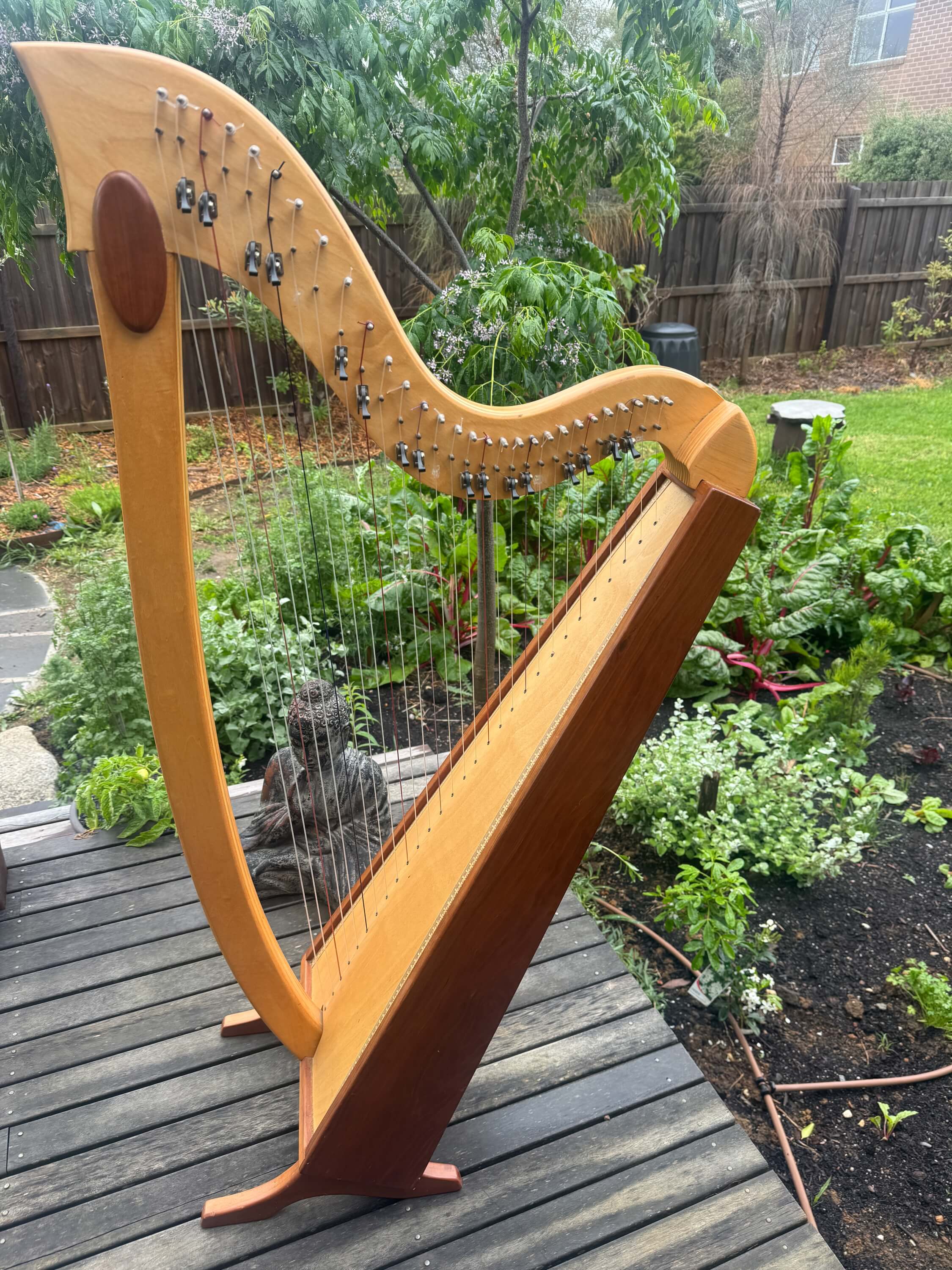 Today, I didn’t just bring home a harp.
Today, I didn’t just bring home a harp.
I reconnected with a part of my own light.
And as I sit beside Elysara tonight, I can feel her hum softly — a promise of songs yet to be played, and hearts yet to be touched.
✨ And so our journey begins. 🎶💖
Today — the 3rd of November 2025 — was one of those moments for me.
Many years ago, I was running one of my wellness retreats — a sacred gathering of women, heart, and healing.
Among the beautiful souls who attended was a woman who was a harp healer.
One evening, she offered a harp healing journey. The lights were dim, candles flickered softly, and the air shimmered with peace.
We all lay on the floor, eyes closed, hearts open, as she began to play.
The first sounds that flowed from her harp were pure magic.
They vibrated through my whole being — ancient, angelic, and deeply familiar. Within moments, I found myself in tears.
Not from sadness, but from something much deeper… a remembrance.
It was as if a doorway within my soul opened to something divine and eternal.
That night changed me. Something awakened inside me — a light that would continue to whisper through the years.
After the retreat, I felt a strong pull to learn from her. I even attended one of her harp sessions, curious and inspired.
But at that time, I couldn’t get a harp of my own, and the ones she had didn’t quite call to me.
So I trusted the timing — knowing that if it was meant to be, the harp that was meant for me would one day find me.
A Full-Circle Moment
Fast forward to just over a week ago.
I was scrolling through Facebook Marketplace, not really looking for anything in particular, when I suddenly saw a post.
A harp.
And not just any harp — but one being sold by her, the same harp healer from my retreat all those years ago.
Instantly, I felt that unmistakable pull in my heart. I messaged her straight away: “Is this still available?”
She replied: “Yes, it is.”
And right then, I knew — this was no coincidence. It was divine timing in motion.
Today, on 3.11.2025, I went to see her.
The moment I walked in and saw the harp, my whole body lit up.
It was the harp — the very same one she had played during that healing session that cracked me open all those years ago.
Her beloved harp — one she had used for years to bring comfort, healing, and light to so many souls.
As I stood before it, I felt tears again — that same vibration of joy, recognition, and reverence.
I didn’t need to think. I simply knew.
This harp and I were meant to meet again.
The Harp Called Elysara
When I placed my hands upon her for the first time, I felt a wave of energy ripple through me — like electricity and peace all at once.
I took her home, sat with her in stillness, and as I tuned in to her energy, I felt a name rising gently from within.
It wasn’t something I chose — it was something that was given.
Through channeling, I heard the name Elysara.
It carried light. It carried love. It felt ancient and angelic.
Later, I learned that Elysara means “the essence of divine light.”
And that’s exactly who she is.
I may not yet know how to play in the traditional sense, but I trust that the sounds will flow intuitively — guided by energy, spirit, and love.
She will teach me. Together, we will learn each other’s language — frequency, resonance, soul.
This isn’t just about music.
It’s about vibration.
It’s about remembering.
And one day soon, Elysara will sing again in my sound healings — bringing the same frequency that once opened my heart, now shared with others.
The Significance of the Day
Today’s date — 3.11.2025 — carries a sacred vibration.
The number 3 resonates with creativity, expression, and joy.
The master number 11 represents spiritual awakening, intuition, and divine alignment.
Together, they remind me that this was no ordinary day.
It was a day of reconnection — a meeting between souls across time and sound.
 Today, I didn’t just bring home a harp.
Today, I didn’t just bring home a harp. I reconnected with a part of my own light.
And as I sit beside Elysara tonight, I can feel her hum softly — a promise of songs yet to be played, and hearts yet to be touched.
✨ And so our journey begins. 🎶💖
Karin
#Elysara #HarpOfLight #DivineTiming #SoundHealing #AwakeWellnessWarrioress #HeartAwakening #FrequencyOfLove #SoulJourney #HarpHealing #NovemberMagic

Journey through the intricate layers of self-discovery and transformation as you embrace the profound experiences of ego death. As old identities and illusions dissolve like mist in the morning sun, find yourself in the void—a sacred space where true rebirth takes place.
Discover the beauty in letting go, allowing your truest essence to emerge and shine brighter than ever. This compelling exploration draws you into the heart of personal awakening, unveiling the grace and newfound authenticity that lie beyond the familiar. Allow this sacred unravelling to guide you towards a life led by love, presence, and authenticity. Dive into the mystery and rebirth, and uncover the true essence of who you are meant to be. Explore the full post to understand how this profound transformation is not an end, but a beautiful beginning.
Read more...